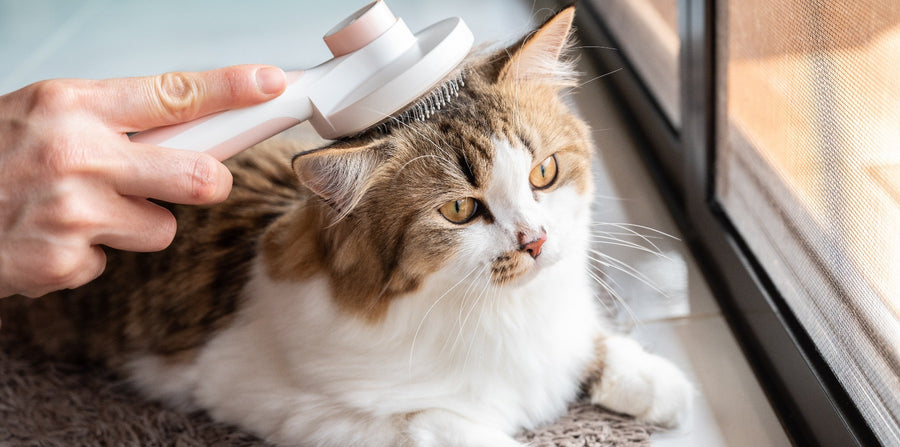Managing Hairballs in Cats

Cat Hairball Remedy: Hairball Treatments for Cats
Grooming is a regular part of a cat’s routine, but their spiky tongues direct the hair backwards and it gets swallowed. When the ingested hair doesn’t pass normally through a cat’s system, it becomes a hairball in the stomach. Cats will typically vomit the hairball up, but it can cause larger issues like a blockage or obstruction in the digestive tract if it is not expelled. While long haired cats or those with excessive grooming habits are most prone to hairballs, any cat can experience them.
Here are a few ways to manage hairballs in cats:
Brush Your Cat Often
Brushing your cat on a regular basis helps to remove excess hair so there is less to ingest when grooming themselves.
Evaluate Your Cat’s Diet
Ensure your cat is eating a complete and balanced, biologically appropriate diet that provides necessary vitamins and minerals. Check the fiber source and percentage of fiber in the food as fiber supports healthy digestion and can help move hairballs through.
Trying adding a Supplement
Incorporating a supplement into your cat’s daily routine can provide additional support by offering elements that their regular diet may be lacking. Vet’s Best Hairball Relief Digestive Aid is formulated by veterinarians and includes a blend of plant-based ingredients that support natural and healthy digestion.
Increase Water Intake
While some cats may like to play in it, cats are notorious for not drinking enough water throughout the day, especially if they mainly eat dry food. Proper hydration is important for whole-body health but can be especially helpful in keeping your cat’s digestive system moving. Always make sure your cat has 24/7 access to fresh, clean water in the home. Finicky cats may prefer drinking from a running tap or a water fountain.
Consult with Your Veterinarian
If your cat has frequent hairballs or experiences other digestive symptoms, always touch base with your veterinarian to rule out or address any medical or behavioral issues that may be contributing.
*All information on this website is for educational purposes only and is not intended to replace the expert advice of a veterinarian or veterinary practitioner.
Related Products
